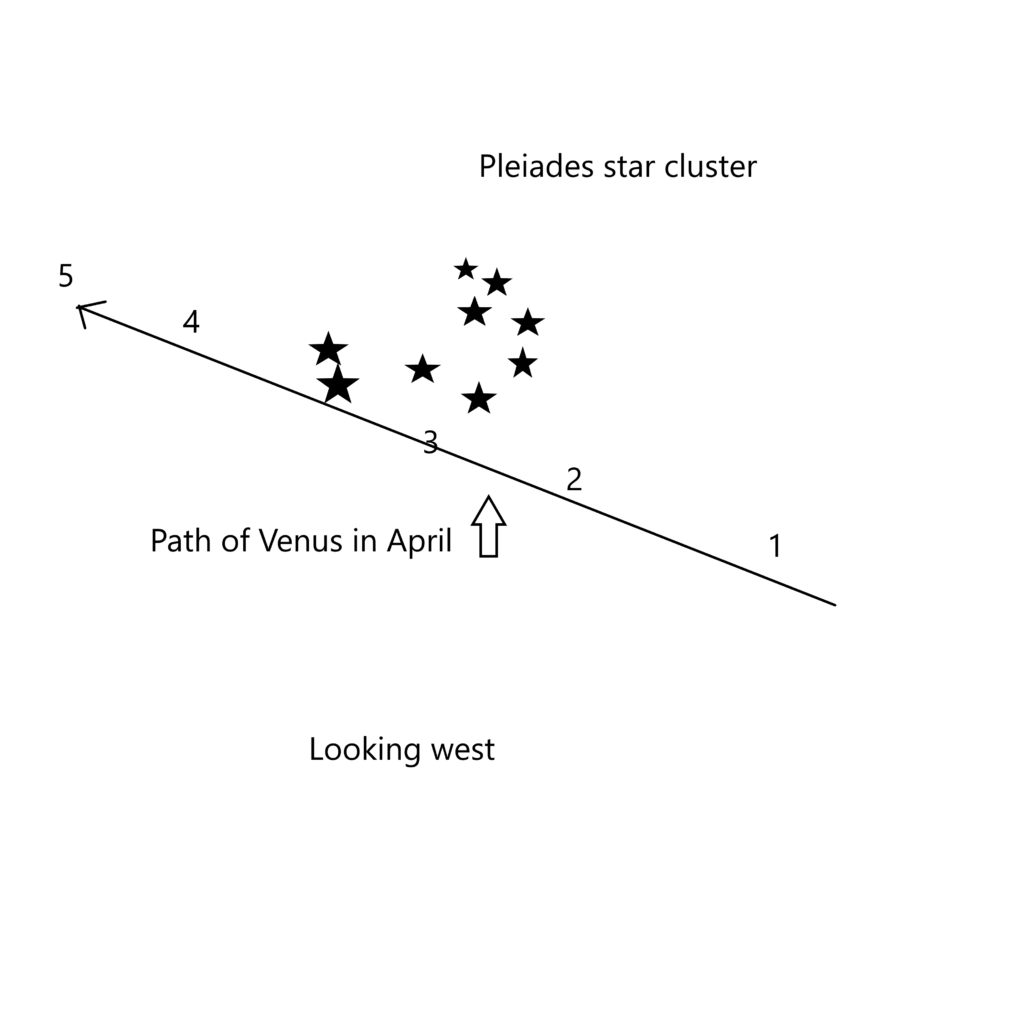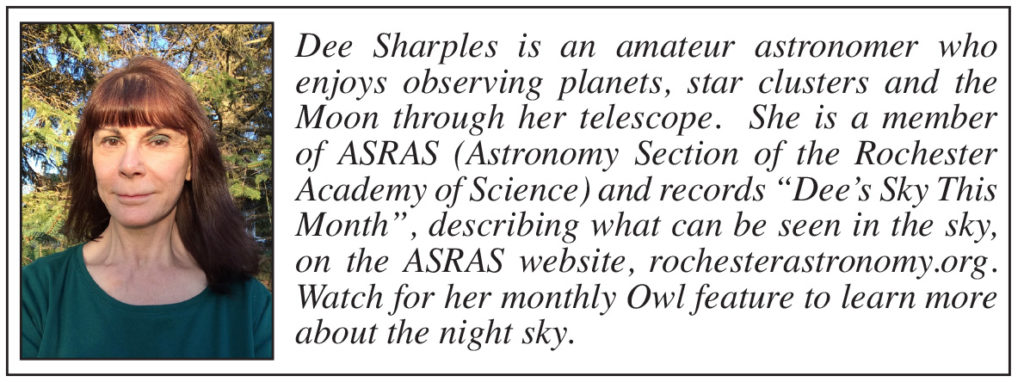The Night Sky-April 2020
April Offers the Pleiades Star Cluster and Lyrid meteor shower
- By Dee Sharples
The planet Venus continues to dominate the evening sky in April shining brilliantly at a whopping magnitude -4.7. An especially beautiful sight will occur from April 1-5 as Venus approaches and crosses the Pleiades star cluster. Venus will be impossible to miss standing about 45 degrees above the western horizon after sunset. As the sky darkens, the stars in this cluster (also called the Seven Sisters) will begin to come into view one at a time. Although you’ll be able to see the cluster naked-eye, a pair of binoculars will show the true beauty of it.

On April 1st, in the early morning hours, three planets Jupiter, Mars, and Saturn, will begin to rise in the southeastern sky. Jupiter rises first at 3:20 AM. It will be the brightest of the three planets shining at magnitude -2.3. Saturn and Mars follow together about 4:00 AM. Saturn shines at magnitude 0.7 and Mars at magnitude 0.8. These last two planets will look like only fairly bright stars, but this gives you the opportunity to notice the distinct color difference between them. Saturn looks yellowish, while Mars has a reddish hue. The trio will rise earlier each morning, but the best time to enjoy this view is one hour before the sun rises.
When the Lyrid meteor shower peaks in the early morning hours of April 22, if it’s clear, there will be fantastic viewing conditions under a moonless sky (new Moon phase). An hour before twilight begins is the perfect time to be outside scanning the sky. Dress very warm, find a dark observing site away from lights, and get comfortable in a chair. Let your eyes casually roam the sky. Meteors can appear in any direction. If you spot a meteor, you can trace its streak of light back to its origin from the constellation Lyra which now lies almost directly overhead. This year astronomers predict we’ll be able to spot approximately 18 meteors per hour. The Lyrid meteor shower is active from April 14th to 30th so if you’re out observing the sky in the early morning hours before dawn, you may spot a sporadic Lyrid.
The constellation Leo the Lion will be due south half-way up from the horizon this month at midnight on April 1st, 11:00 PM on the 15th, and 10:00 PM on the 30th. It’s easily recognized by the stars forming a backwards question mark which depict the lion’s head.
April promises the beginning of many nights and early mornings of comfortable observing opportunities.

Strasenburgh Planetarium April 2020
Public observing on Saturday nights from the roof of Strasenburgh Planetarium, which would normally resume in April, will be canceled until further notice due to the COVID-19 outbreak. For updates go to: http://www.rochesterastronomy.org/the-strasenburgh-scope/
For more information visit NASA at https://apod.nasa.gov/apod/ap200402.html